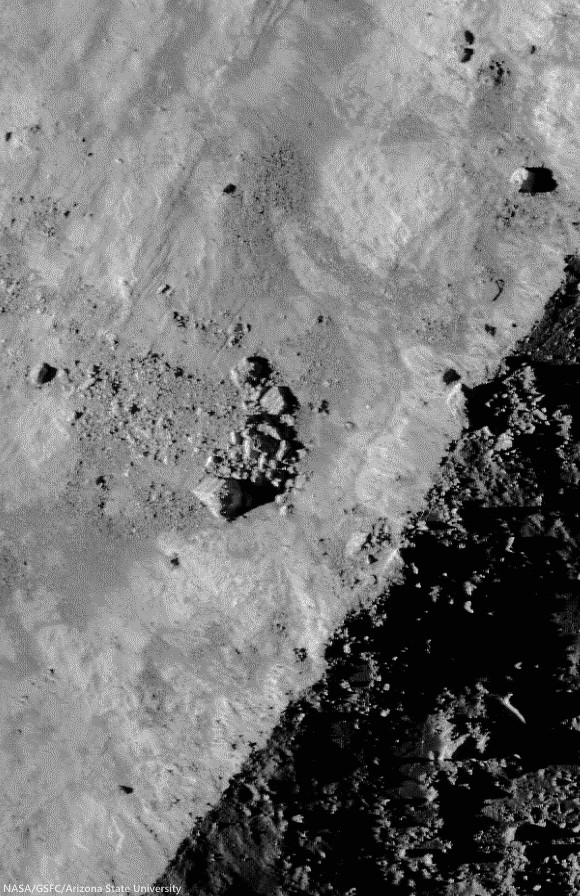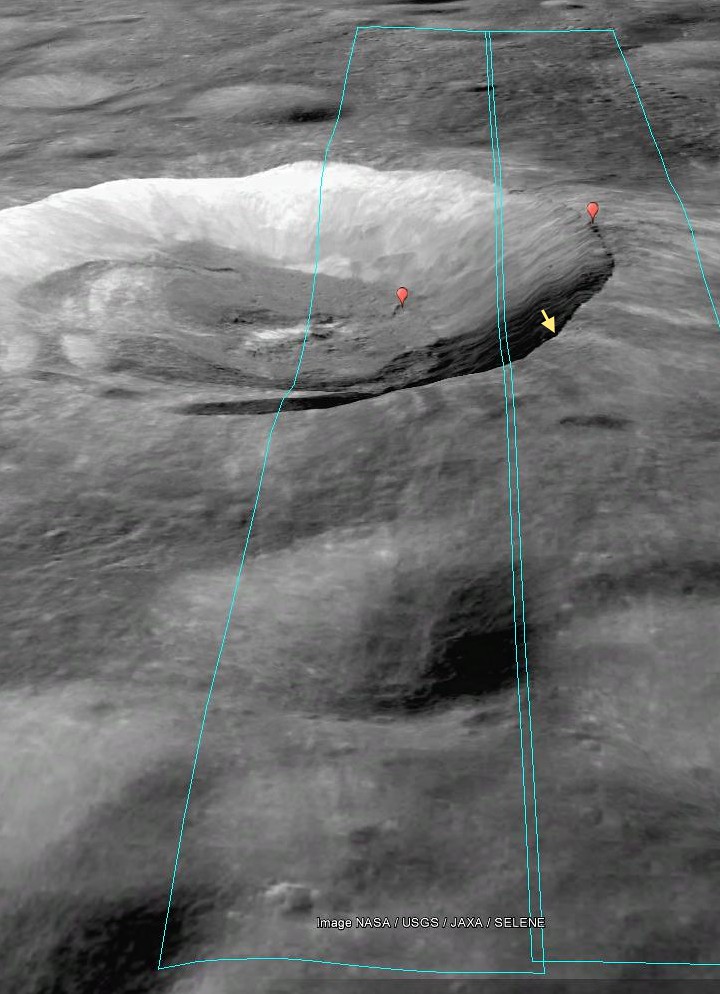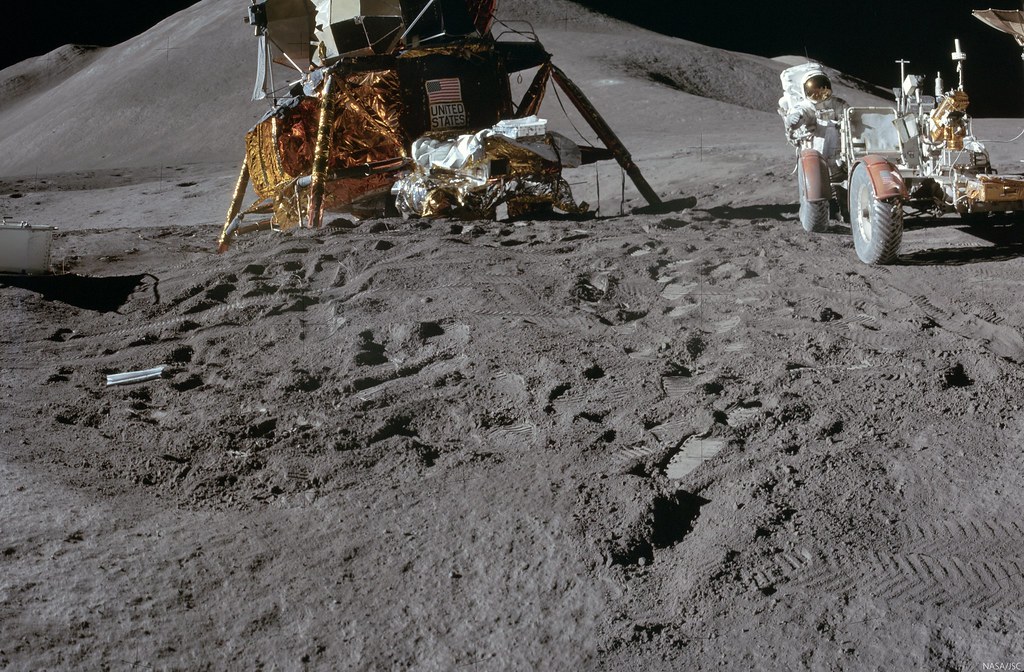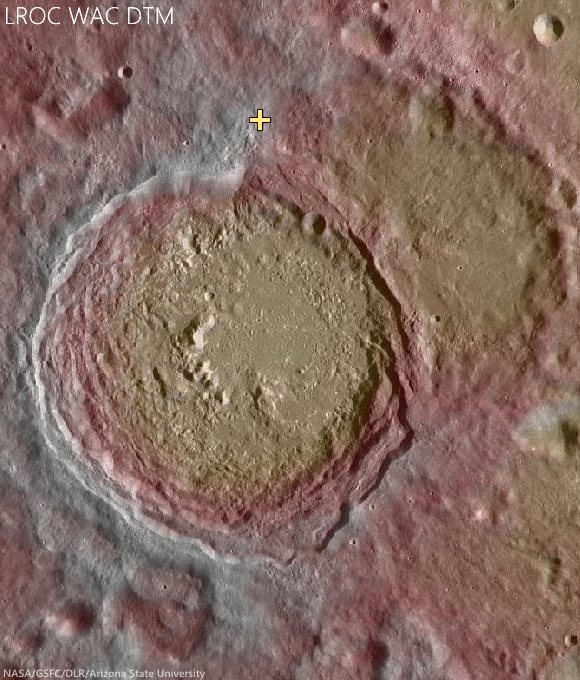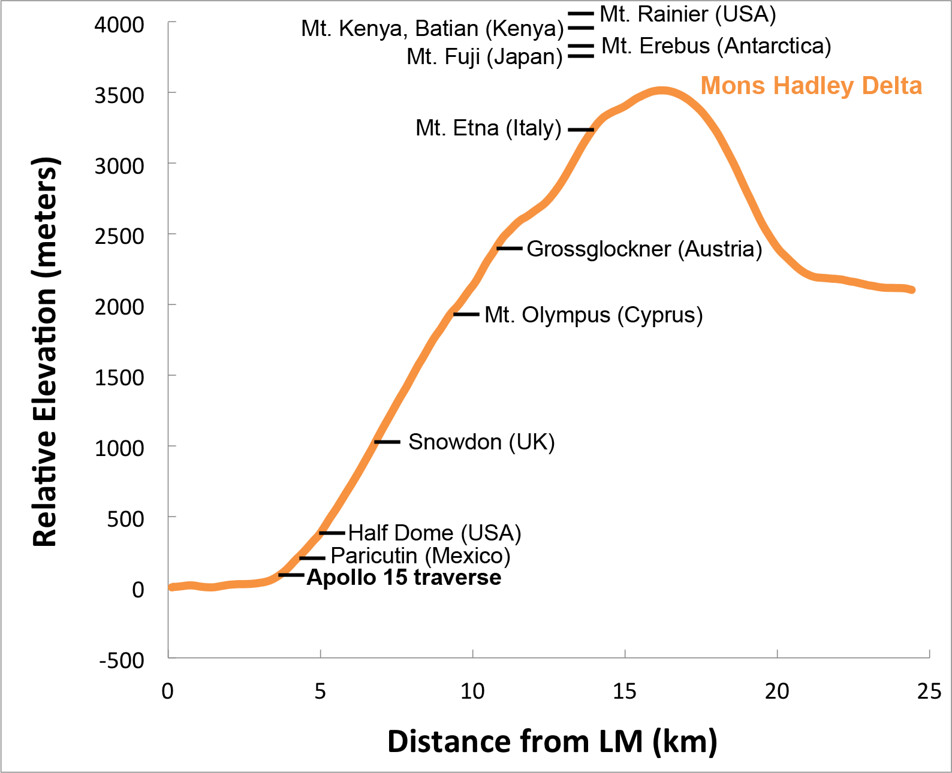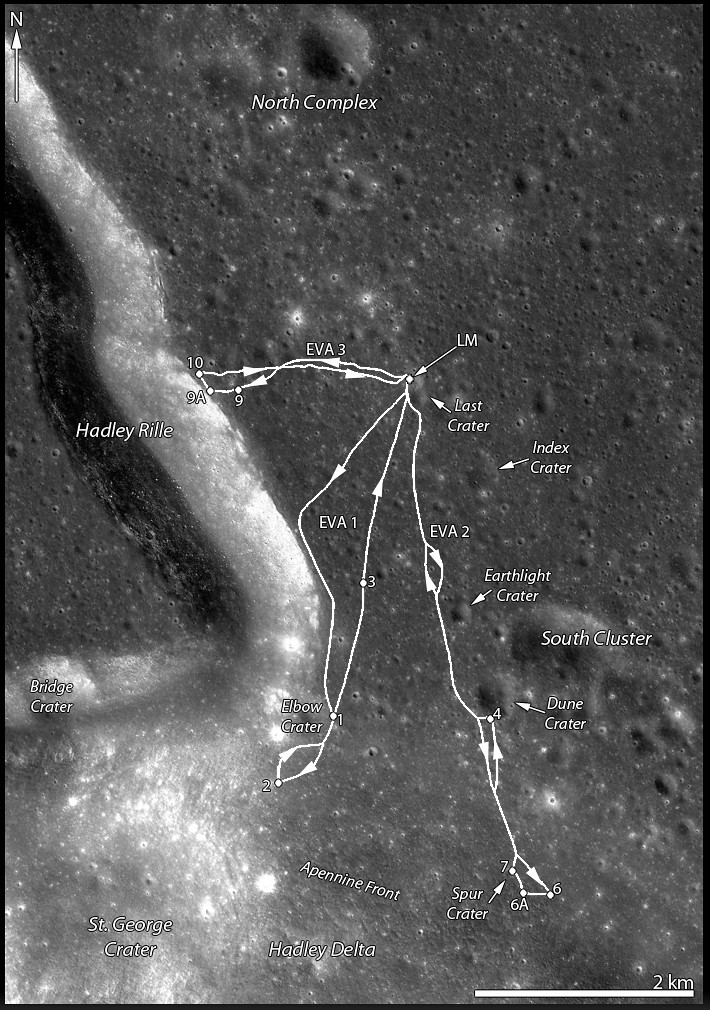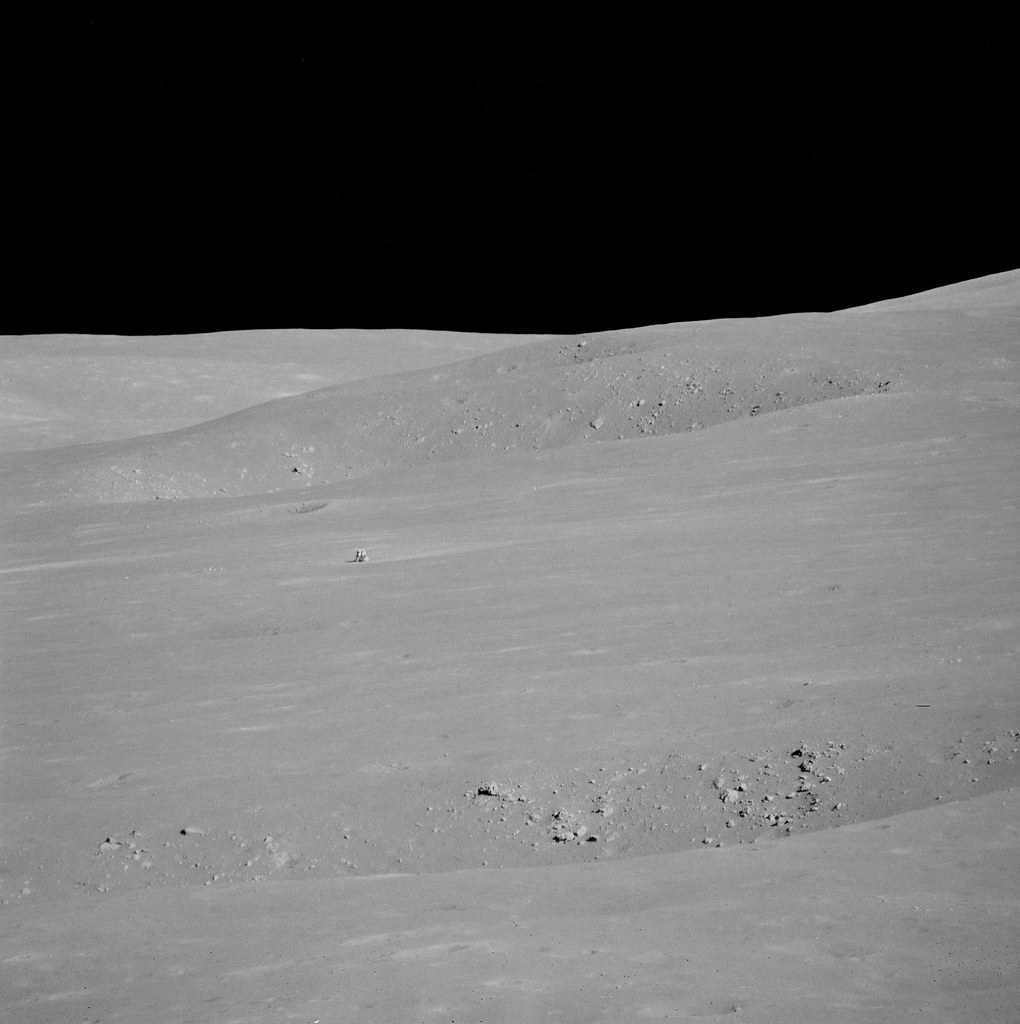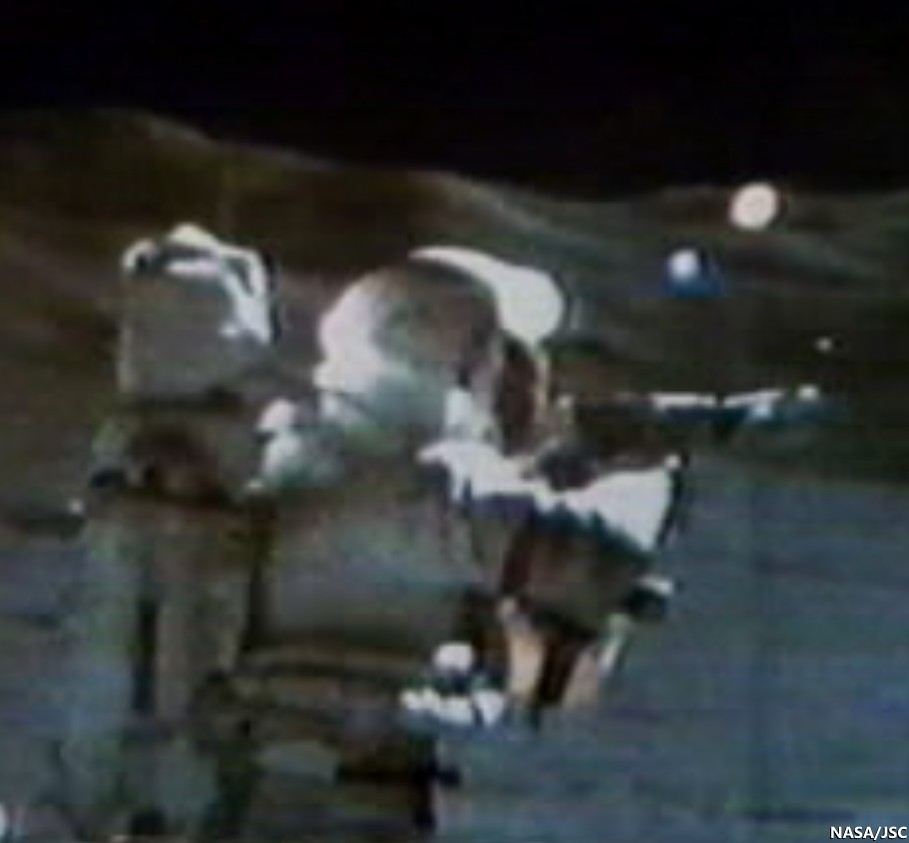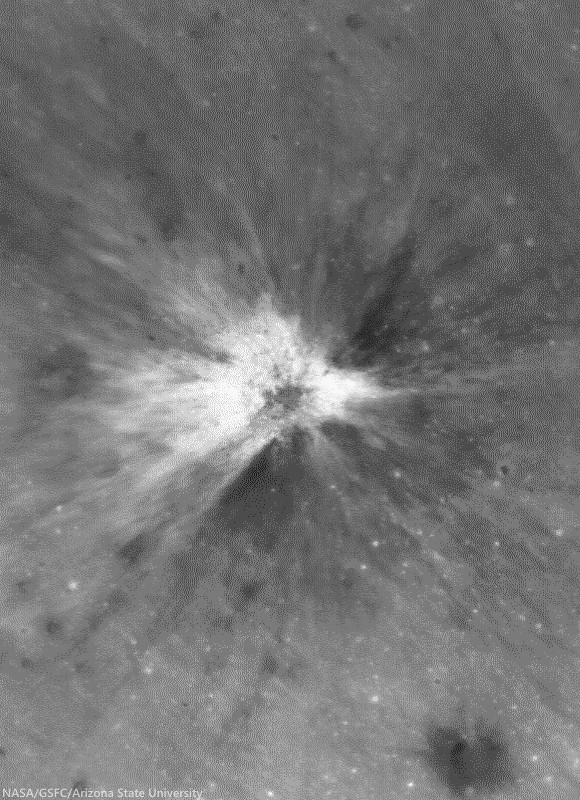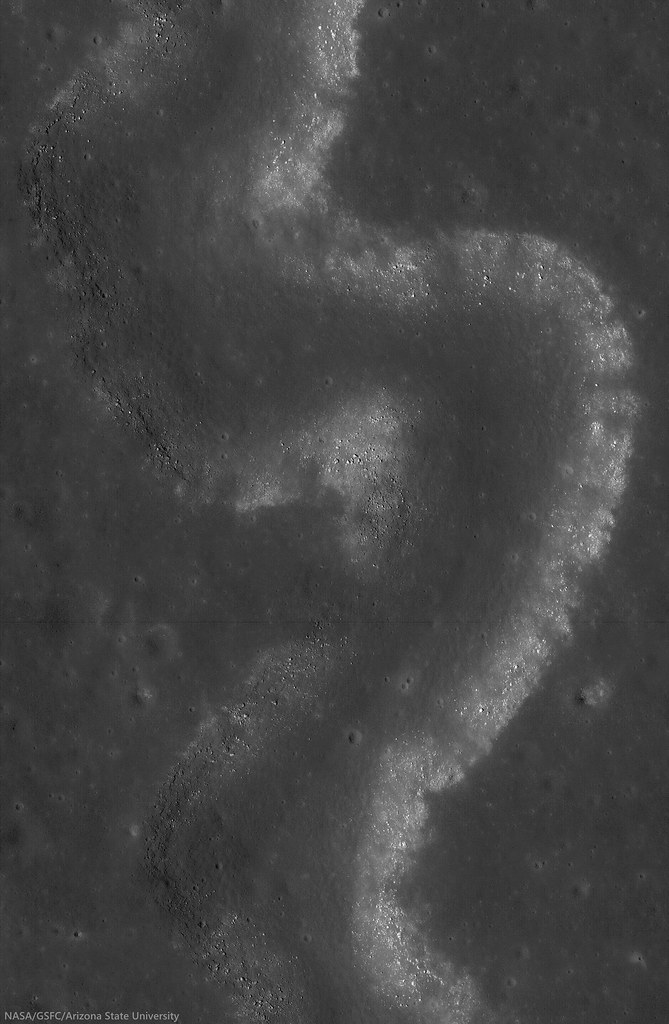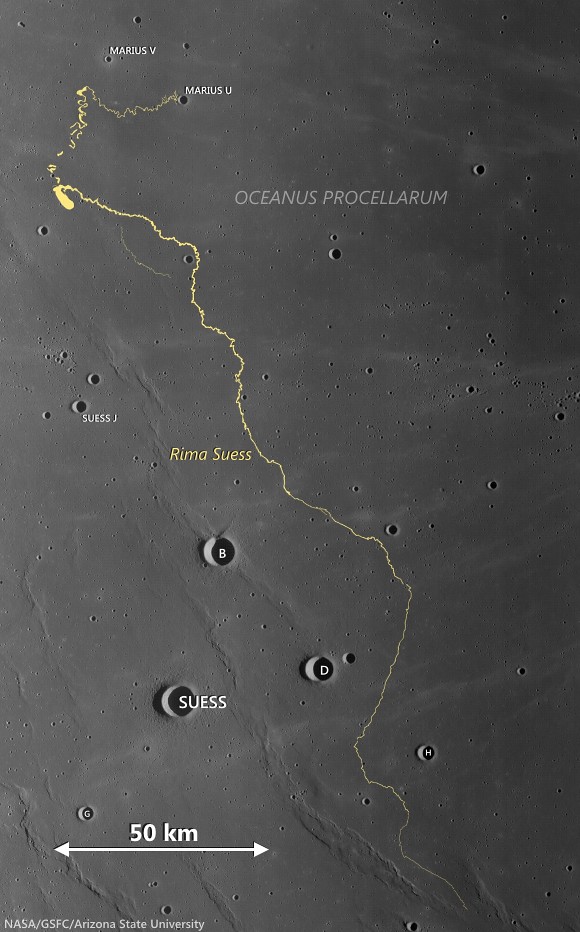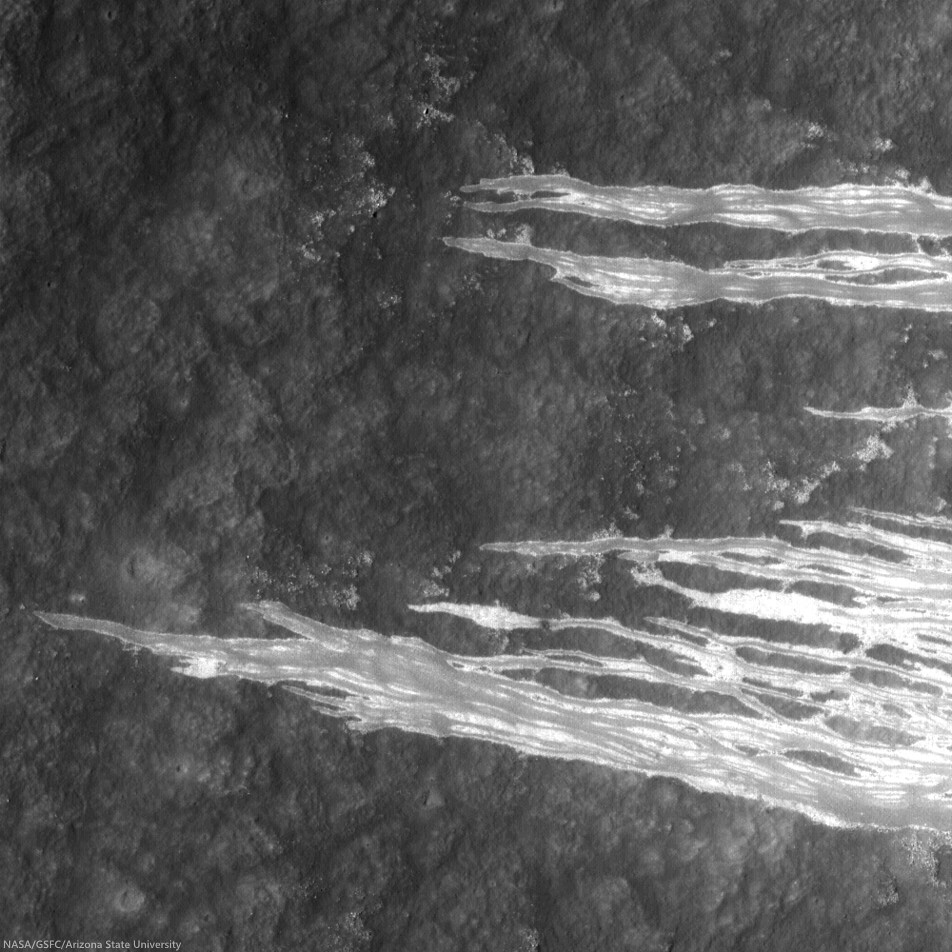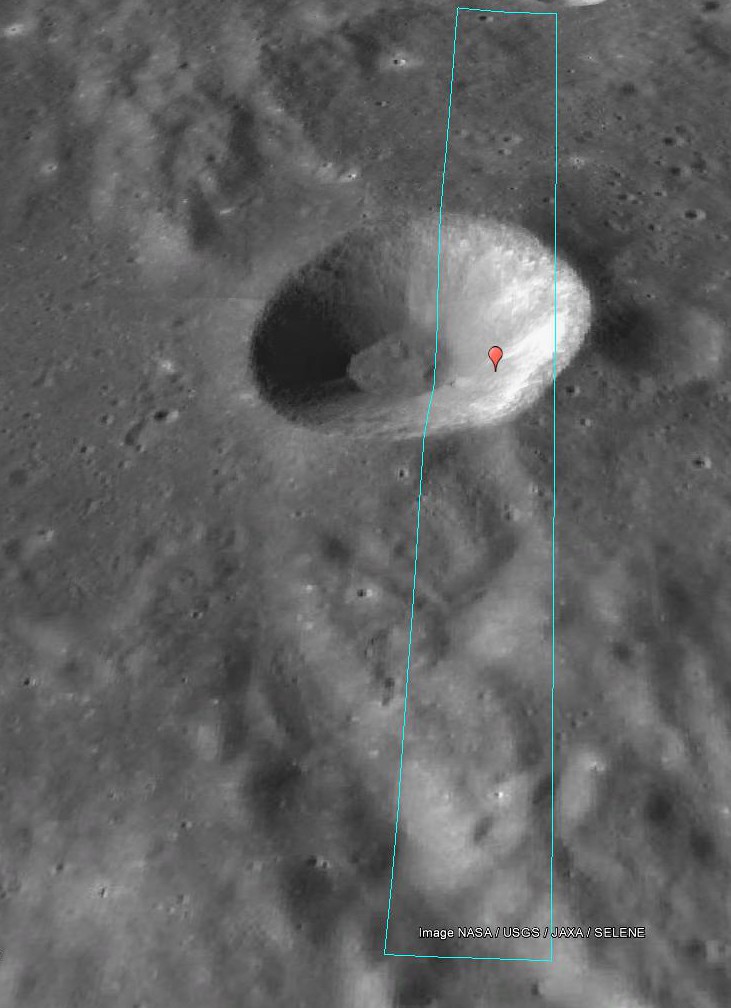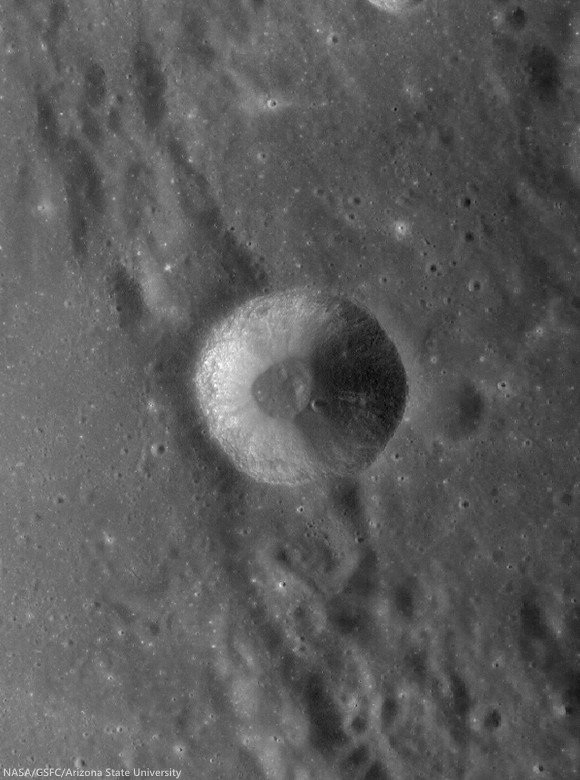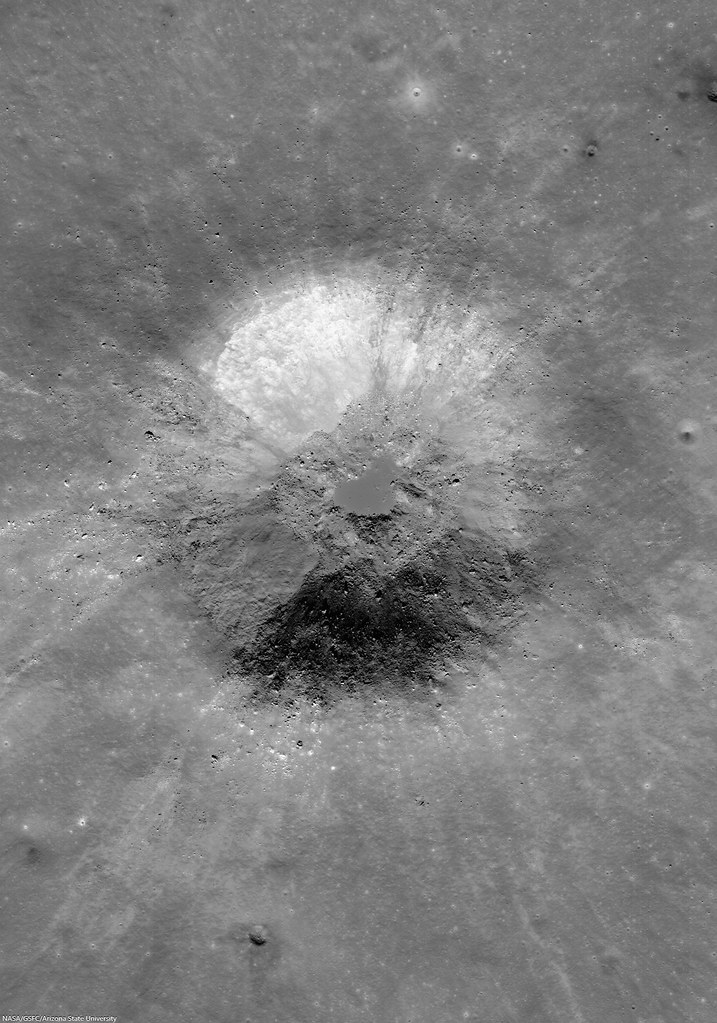 |
| Very fresh roughly 4 km crater deep inside ancient, 222 km Campbell crater, north of Wiener F and Mare Moscoviense. Note the paucity of small craters on the melt disk on this young crater's floor, one of many clues to a recent origin. LROC NAC mosaic M1133199962LR, LRO orbit 19112, September 7, 2013; 4.28° incidence, resolution 1.11 meters from 148.28 km over 46°N, 150.87°E [NASA/GSFC/Arizona State University]. |
LROC News System
The longer a crater's ejecta is exposed to space weathering, the lower the albedo of the ejecta becomes.
Over time, gravity also takes effect, pulling material downslope and softening the appearance of the crater rim and the hummocky ejecta deposit.
Therefore, craters with highly textured, high albedo ejecta and crisp, well-defined rims are considered relatively fresh, like the crater above (46.188°N, 150.717°E), deep within the ancient farside crater Campbell.
In this case, the slightly asymmetric ejecta blanket is likely due to the fact that this crater formed on top of existing topographic highs, which appear to be the intersecting rims of partially flooded craters.
Over time, gravity also takes effect, pulling material downslope and softening the appearance of the crater rim and the hummocky ejecta deposit.
Therefore, craters with highly textured, high albedo ejecta and crisp, well-defined rims are considered relatively fresh, like the crater above (46.188°N, 150.717°E), deep within the ancient farside crater Campbell.
In this case, the slightly asymmetric ejecta blanket is likely due to the fact that this crater formed on top of existing topographic highs, which appear to be the intersecting rims of partially flooded craters.
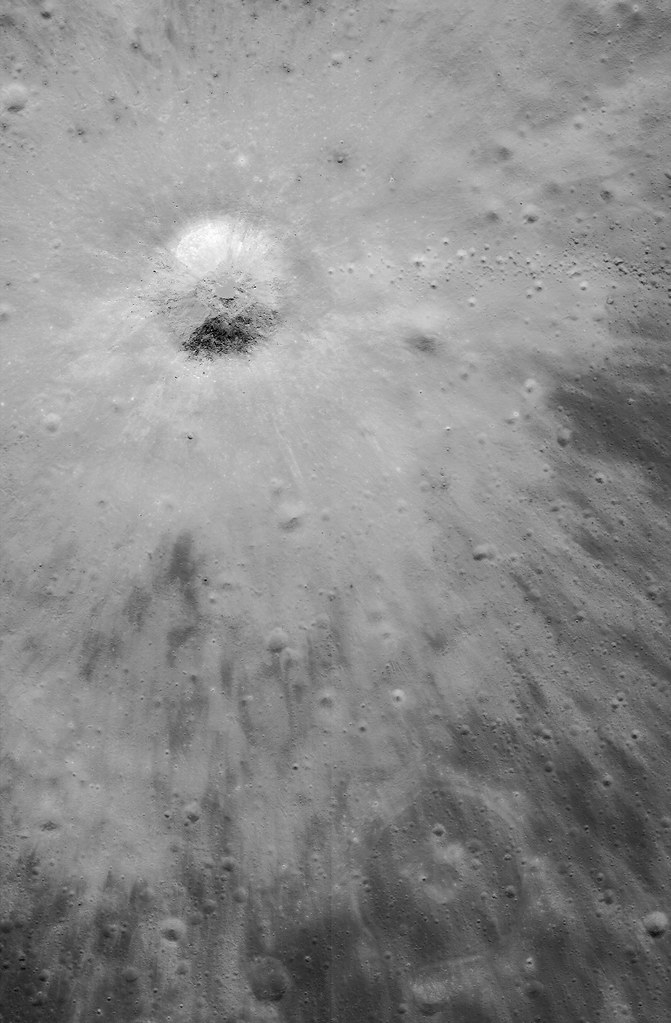 |
| Bright, optically immature ejecta blanket, from the fresh crater is like a bright fan of farside anorthositic highlands terrain spread over an iron rich optically mature patch of mare deep inside ancient Campbell crater. Note the string of secondary crater east of the impact (and the nearly mare-inundated "ghost crater," on the edge of the ejecta blanket at bottom right). A larger 10.74 km-wide field of view, from the same, low incidence angle LROC NAC mosaic. [NASA/GSFC/Arizona State University]. |
A portion of the floor of Campbell has been resurfaced by basaltic volcanism, an uncommon occurrence on the lunar farside. In this case, the volcanic activity did not produce sufficient lava to completely cover all of the craters in the floor, leaving traces of flooded craters like the one at lower right, on the edge of the ejecta blanket, in the NAC field of view above.
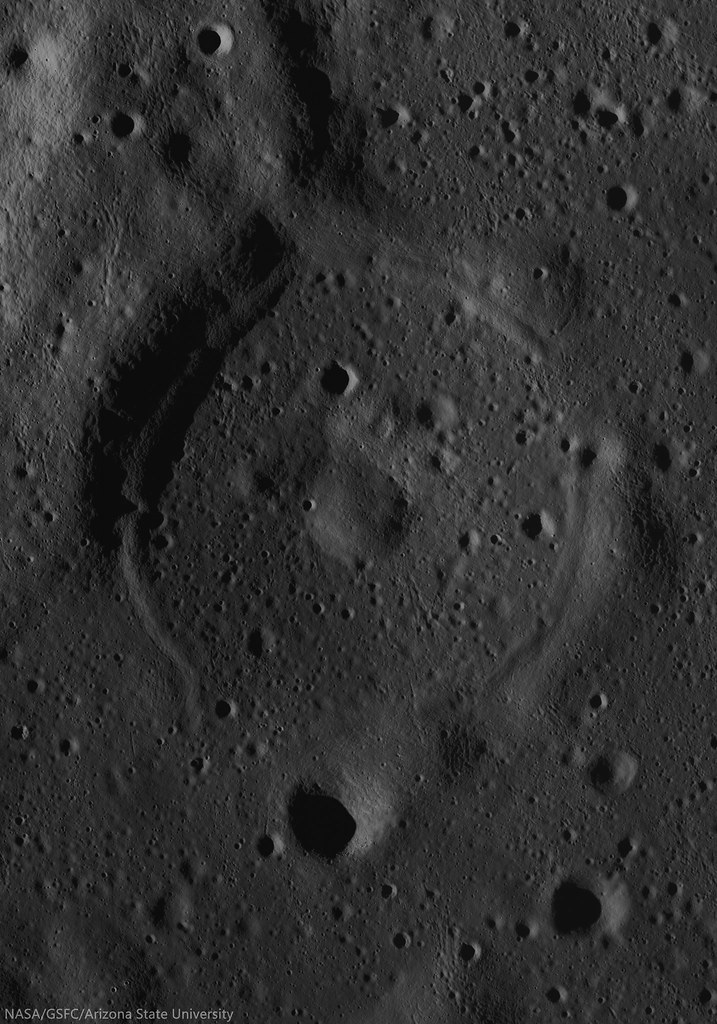 |
| An ephemeral ghost crater stands out in the depth of field resumed in long evening shadow, though the reflectivity of the ejecta from the fresh crater toward the north-northwest is still slightly traced out. A 5.77 km-wide field of view from M180187723LR, LRO orbit 11676, January 2, 2012; 81.93° evening incidence angle, 1.71 meters resolution from 176.17 km over 45.93°N, 151.34°E [NASA/GSFC/Arizona State University]. |
 |
| Understanding the Moon requires orbital photography at every angle of illumination. A full-width 16.47 km-wide field of view from M180187723LR [NASA/GSFC/Arizona State University]. |
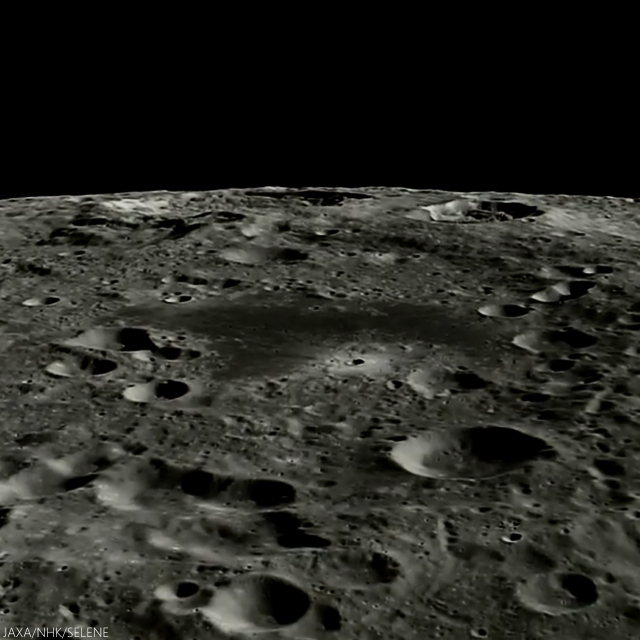 |
| The western two-thirds of Campbell are more difficult to discern from polar orbit, but our bright fresh crater perched on the north of its small plain of mare basalt are easy to pick out, looking south from Japan's lunar orbiter Kaguya in 2008. This image is taken from just past the halfway point in the HDTV sequential still video below, from approximately 120 km overhead [JAXA/HKT/SELENE]. |
As noted in the YouTube video, presented by the Japan's space agency JAXA, Campbell is immediately north of Von Neumann and Wiener craters (on Campbell's southeast and southwest, respectively). Between these two craters, unnoted however, is Wiener F, with it's distinctive semi-circular bench of impact melt, discussed in more detail HERE.
Explore the full NAC mosaic, HERE.
Related Posts:



